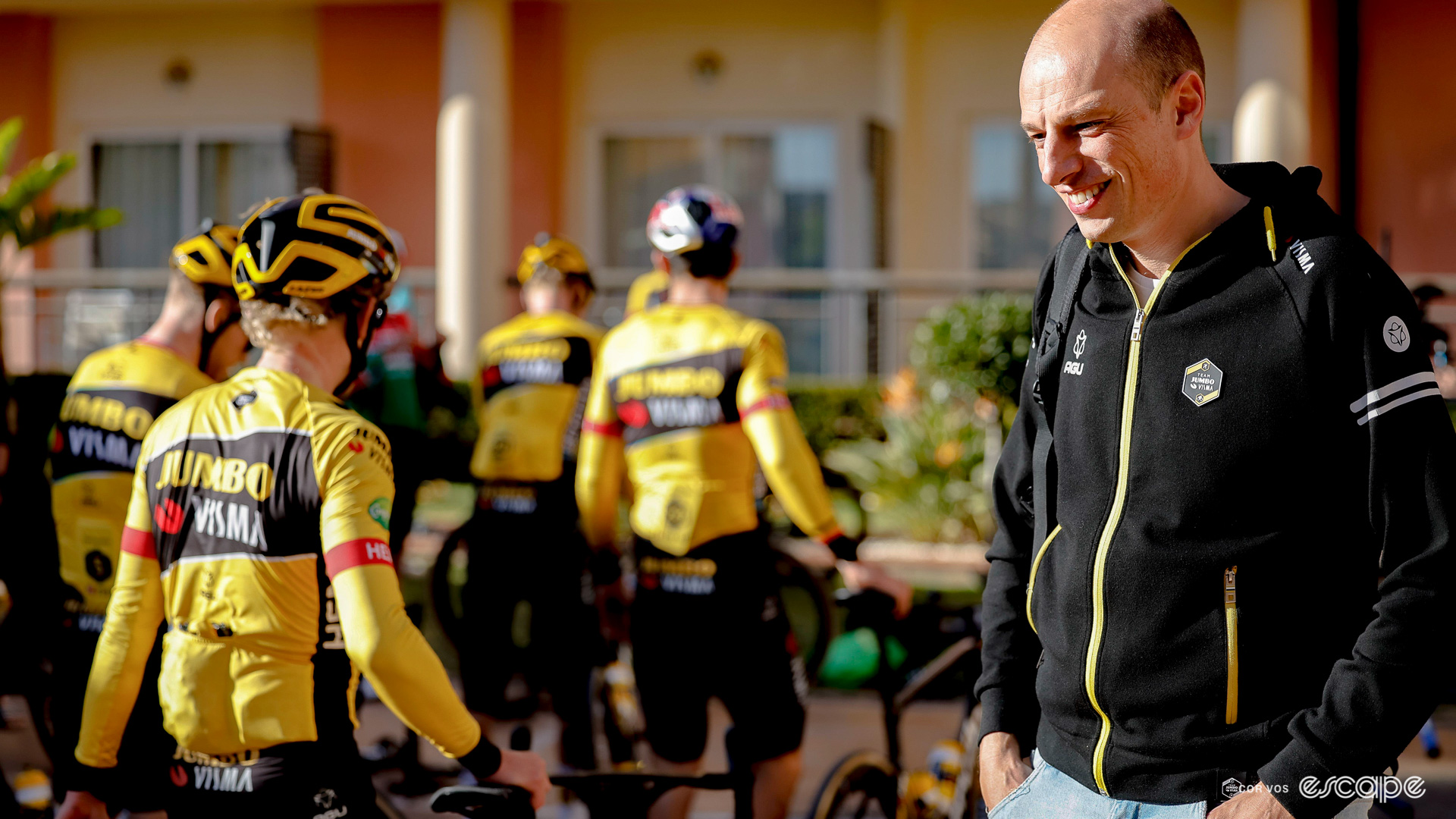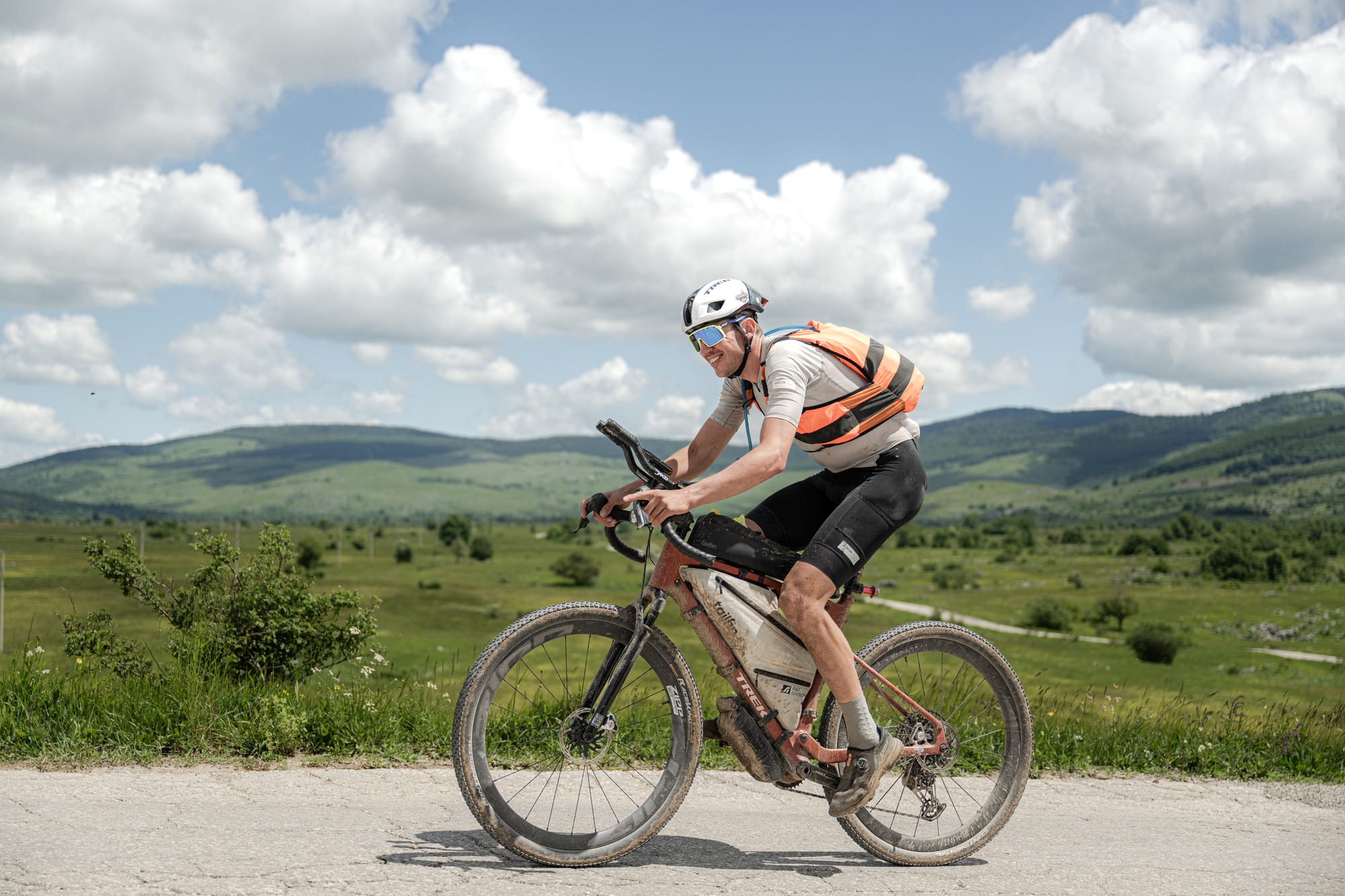Given the team's incredible success in 2023, one could be forgiven for assuming Jumbo-Visma is Dutch for jumbo victory count. With 70+ wins and all three Grand Tours in the bag, including a clean sweep of the Vuelta podium, the team has enjoyed success that even the most dominant of current and former super teams could only dream of. But it hasn't always been that way.
The current incarnation of Jumbo-Visma arose from the ashes of the old Rabobank squad, first as Blanco, then Belkin, and later Lotto-Jumbo, until finally the team which will be known as Visma-Lease-a-bike in 2024. As a pro with Cofidis in 2005,6, and 7, Mathieu Heijboer juggled racing with university study before quitting cycling when he had finished his sports physiology education. First, he took a job as coach at the famous Rabobank U23 squad, before making the move into the pro team following Rabobank's exit in 2012.
He's been in the team ever since and takes us on a deep dive into the very foundations of Jumbo's 2023 success. Starting with the "shit days" of 2015 when the team scored only six wins in the entire season, right up to today, Heijboer talks us through the process of turning the ship onto a successful trajectory, attracting Wout van Aert to the team before that process had really bore any fruit, and his three pillars of performance: training, equipment, and nutrition.
Heijboer tells us about finding inspiration in the New Zealand All Blacks rugby team in shaping Jumbo's transformation and how coaching a Jumbo rider is not the job of one coach, but a team of performance staff.
As always, full episodes of Performance Process are for Escape Collective members only. You can listen by signing up here, after which you’ll receive an email with instructions for adding the member-only feed to your pod app of choice. We’ve put roughly half of the first episode up for free and you can listen to that below.
Here are a few highlights from the conversation:
Heijboer on the inspiration behind Jumbo's new structures: Well, the way of building a team and building a strong organisation where everybody is feeling responsible for the growth of the team, that was really inspired by the book Legacy about the All Blacks. So that's yeah, a big inspiration for especially Richard Plugge, Merijn Zeeman, who were really the founders of the of the new team. And then what I, for example, did I had a lot of talks with Jac Orie, who was the speed skating coach of the lotto-Jumbo speed skating team, because yeah, we were one team speed skating department, which is very popular in the Netherlands, and cycling. And, well, he also gave me a lot of insights in how he built up his speed skating team, he was already very, very successful back then with a lot of Olympic gold medals. And he still is. So those were some of the examples that I just went to other successful coaches to listen to. And to help how to build like a performance-driven structure around the athlete to make sure they reach their full potential
On hacking and maintaining the effects of altitude training: So you've probably read the papers as well from Bent (R Rønnestad, PHD) where he's showing that altitude or heat training can be a replacement of altitude training but not on the same level but still it has more or less the same effects but not as strong. But what we sometimes do is after altitude can continue or start doing some heat training sessions to maintain the effects that we have achieved from those three weeks on altitude. So that's a strategy to lengthen the effect of altitude training.
On equipment choices: We are now in the very fortunate position that a lot of partners want to partner with us. So an example of how we we work now is that last year, obviously, we switched to SRAM, and as a consequence, we were also free to choose the shoes that we wanted. Instead of our marketing manager, just go out on the market and see how much money you could from a sponsor, I went to our biomechanical staff and said, just make me a list of the best shoes in the market. Please give me every aspect of the shoe stiffness, production, weight, well, whatever they could think of that a specialist or not. And then I got a top three, and then it was a top three performance-driven or performance-based shoe. And then we just went out with that list to those three brands. To make sure that we got the best shoe for our team. So that's, that's, in fact, yeah, turning around the way of working. And I think that defines a little bit how I look at equipment, and how I try to make sure the best equipment is in our team.
On the changes in nutrition strategies across his twenty years in the sport: Well, I think what has changed mostly is that that especially since when I was arriving, which is already a long time ago, but Nowadays, the realization of how important nutrition is. It's way more integrated in in the team but also in the athletes on the riders minds than it was 10 or 15 years ago. So, at this, at this moment, you really cannot see nutrition separate from training. It's the complete picture. So when you do a training, you also know how many carbs you will take during a ride. And if you want to know the goal of the training, you can alter the amount of carbs that you take. But I mean, 10 years ago, or 15 years ago, when I was a writer, I would know, the day before maybe only what training I was going to do and maybe what intervals I was going to do. But nowadays, riders know exactly what ride they are going to do the next day, but also to their bottle, what their water, what is what's in their bottles, how many bars they need to take what's on the menu after the training, what's on the menu on the evening, to make sure adaptation to the training is optimised, and to make sure recovery for the next day is also optimised. So I think, especially that that realisation of how important nutrition is it's completely different from what it was back then.
Did we do a good job with this story?



